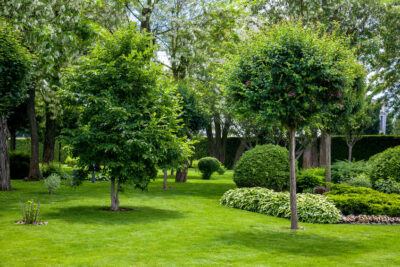
In an era where energy efficiency is not just desirable but necessary, homeowners are constantly exploring ways to cut down on power usage and reduce their carbon footprint. One often overlooked strategy is the strategic use of landscaping, particularly through the planting of trees. Trees aren’t just aesthetic enhancements; they’re also powerful tools for improving household energy efficiency, especially in tempering home heating and cooling costs.
The Role of Trees in Energy Conservation
1. Cooling in the Summer: Trees can significantly lower summer air temperatures by blocking heat radiation and releasing water vapor through their leaves in a process called transpiration. By providing shade, trees cool the air and surface temperatures around them, which can reduce the temperature inside nearby homes. A well-placed tree can cut air conditioning needs by 30% and save 20-50% in energy used for cooling.
2. Warming in the Winter: During winter, trees function as windbreaks, reducing the wind chill near your home. Deciduous trees are beneficial as they lose their leaves in winter, allowing sunlight to pass through and warm up the building. Strategic placement of evergreens can also shield your home from icy winter winds, potentially reducing heating demands by 10-30%.
Strategic Placement of Trees for Maximum Efficiency
1. Planting for Shade: To maximize shade on your home, focus on planting deciduous trees to the south and west of your home. The leaves will block infrared radiation during the summer, which can significantly reduce the load on your air conditioning system. By placing larger trees near pavement, driveways, and walkways, you can also minimize landscape heat load.
2. Windbreaks for Protection: Plant evergreen trees and shrubs on the north and northwest sides of your home to act as a windbreak. For an effective windbreak, trees should be planted at a distance of two to five times the mature height of the tree from the home. Dense, low shrubs and trees can also block wind from moving across the ground, keeping the area near the foundation warmer.
Selecting the Right Trees
1. Deciduous Trees: Trees like oaks and maples are excellent for providing broad shade in the summer. Their wide canopies can cover larger areas of your home, reducing indoor temperatures.
2. Evergreens: Species like spruce and fir are ideal for windbreaking due to their dense foliage and low-lying branches. These are best planted on the north and west sides to combat cold winds.
3. Fast-Growing vs. Slow Growing: Fast-growing trees such as birch or willow can provide quicker benefits but often have shorter lifespans and might be less robust against diseases. Slower-growing trees, while requiring more patience, typically provide longer-lasting benefits and sturdier structures.
Benefits Beyond Energy Savings
Besides lowering energy costs, trees provide several additional advantages:
- Environmental Impact: Trees absorb carbon dioxide and potentially harmful gasses from the air and release oxygen, improving air quality.
- Increased Property Value: Landscapes that include mature trees are often estimated to increase property values by up to 20%.
- Wildlife Habitat: Trees provide essential habitat, food, and protection for wildlife, contributing to local ecological health.
Integrating trees into your landscape isn’t just about beautification—it’s a practical approach to reducing your energy bills and enhancing the comfort of your home. Whether you’re designing a new property landscape or retrofitting your current residence, consider the strategic placement of trees as an investment in your home’s energy efficiency. At Cold Stream Farm, we can help guide you to the best species and placements for your specific regional needs and personal preferences. Harness the natural power of trees and transform your landscape into an ally against climate extremes.
Contact Cold Stream Farm at (231) 464-5809 today or visit us online for more information!
